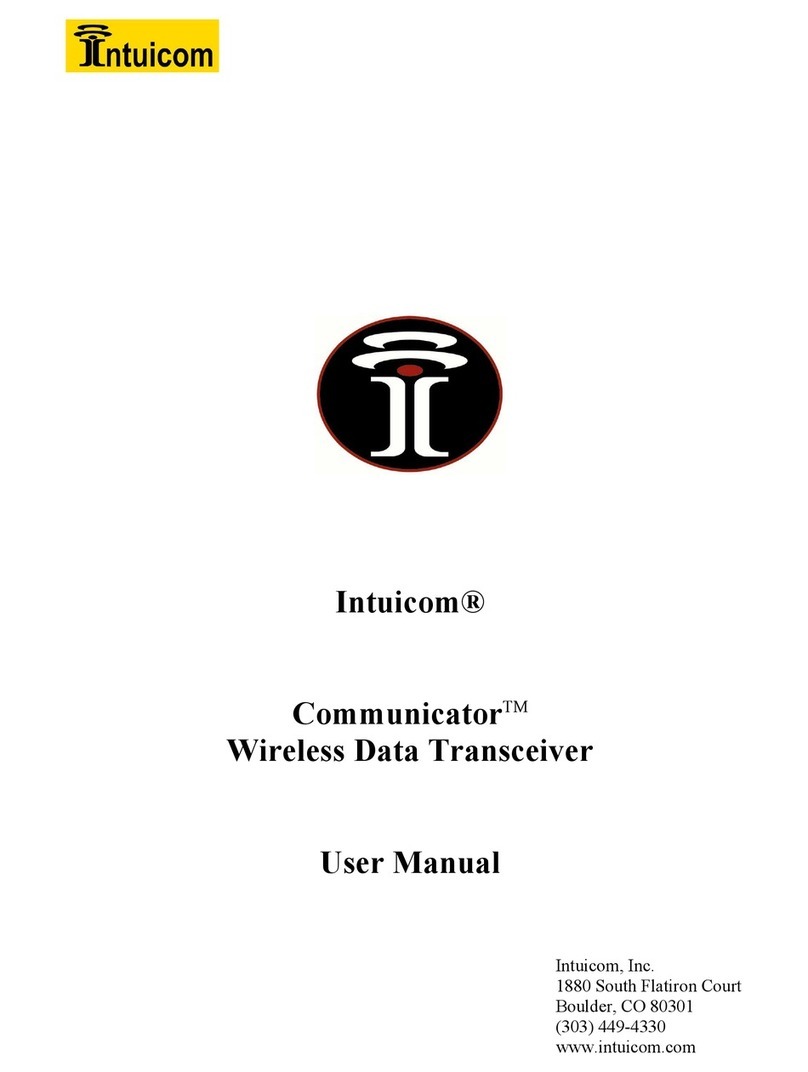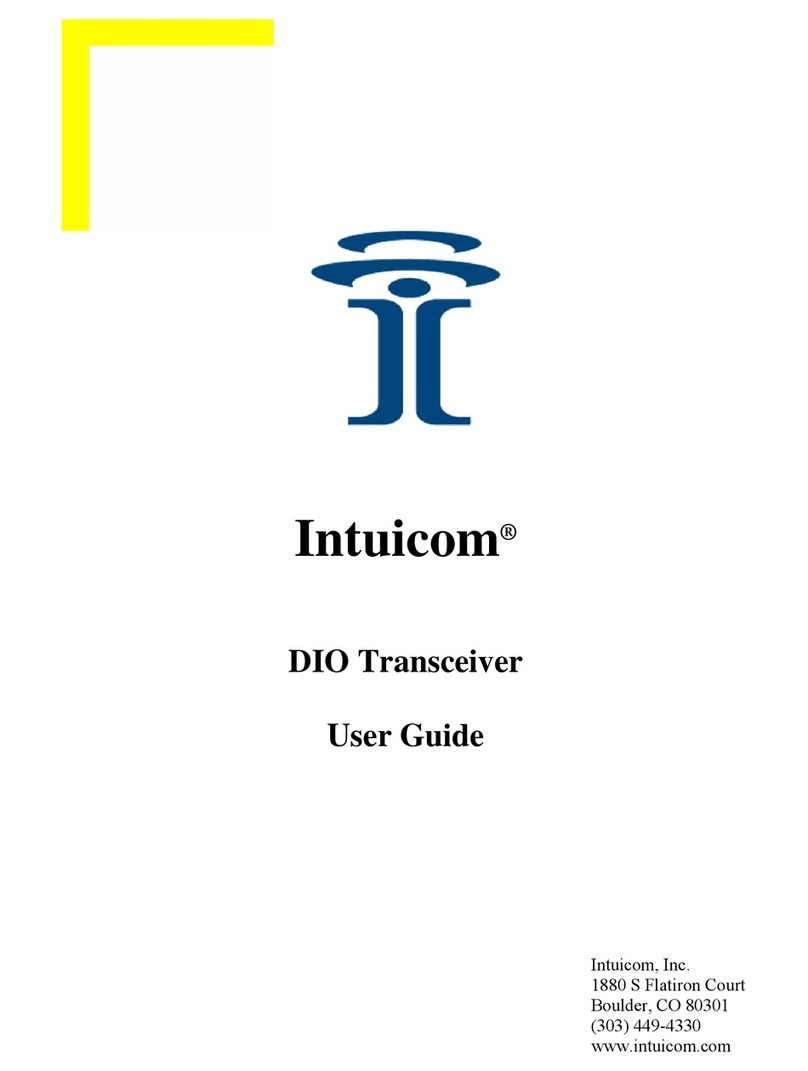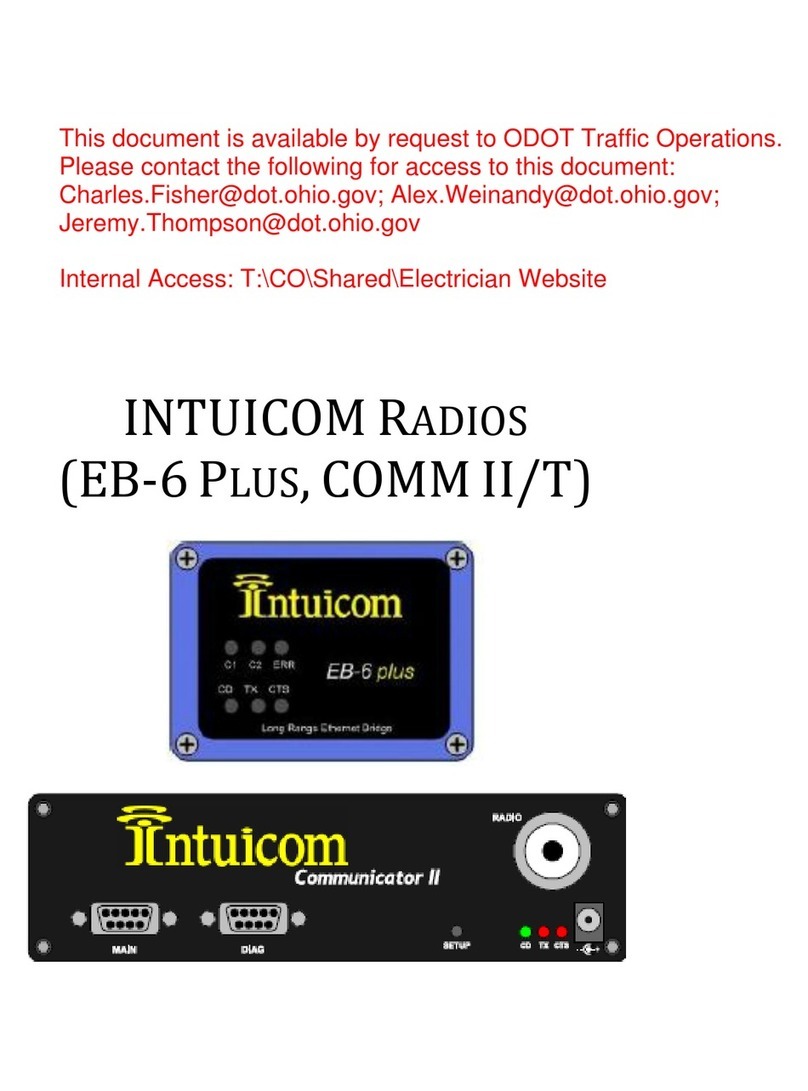
Communicator II User Guide
7.3 (B) ModBus RTU........................................................................................................... 22
7.4 (C) RS232/485............................................................................................................... 22
7.5 (D) Setup Port............................................................................................................... 23
7.6 (E) Turn on/off delay..................................................................................................... 23
7.7 (F) Flow Control........................................................................................................... 24
8Call Book (Main Menu Option 2)...................................................................................... 25
8.1 Entering or Modifying numbers in the Call Book......................................................... 26
8.2 Programming the Call Book to Use 3 or 4 Repeaters .................................................. 26
8.3 Programming The Call Book in Multipoint Systems .................................................... 28
9Radio Parameters (Main Menu Option 3)........................................................................ 29
9.1 (0) FreqKey................................................................................................................... 29
9.2 (0) Hop Table Version .................................................................................................. 31
9.2.1 (1) Hop Table Size................................................................................................ 31
9.2.2 (2) Hop Freq Offset............................................................................................... 31
9.2.3 Additional Frequency information for 2.4GHz transceivers ................................ 31
9.3 (1,2) Max Packet Size and Min Packet Size.................................................................. 33
9.4 (3) Xmit Rate................................................................................................................. 35
9.5 (4) RF Data Rate........................................................................................................... 35
9.6 (6) Slave Security .......................................................................................................... 36
9.7 (7) RTS to CTS .............................................................................................................. 36
9.8 (8) Retry Time Out ........................................................................................................ 37
9.9 (9) Lowpower Mode...................................................................................................... 37
9.10 (A) High Noise .............................................................................................................. 38
9.11 (B) MCU speed ............................................................................................................. 38
10 Radio Statistics (Main Menu Option 4) ........................................................................ 39
10.1 Average Noise Level ..................................................................................................... 39
10.2 Average Signal Level .................................................................................................... 40
10.3 Overall Rcv Rate (%).................................................................................................... 40
10.4 Number of Disconnects................................................................................................. 40
10.5 Radio Temperature ....................................................................................................... 41
11 TDMA Menu (Main Menu Option 6) ........................................................................... 42
12 Password (Main Menu Option 8) .................................................................................. 43
12.1 Setting a Password........................................................................................................ 43
12.2 Changing a Password................................................................................................... 43
12.3 Disabling a Password................................................................................................... 43
13 Transceiver Location...................................................................................................... 44
14 Front Panel LEDs ........................................................................................................... 45
15 RS232 Pin Assignments .................................................................................................. 46
16 Establishing Data Communication Links..................................................................... 48
17 RS422 and RS485 Operation ......................................................................................... 52
18 Other Settings..................................................................................................................54
18.1 Baud Rate...................................................................................................................... 54
18.2 Setup Timeout................................................................................................................ 54
19 Technical Specifications ................................................................................................. 55
Revision 1.0c iv © 2003 Intuicom Inc.































